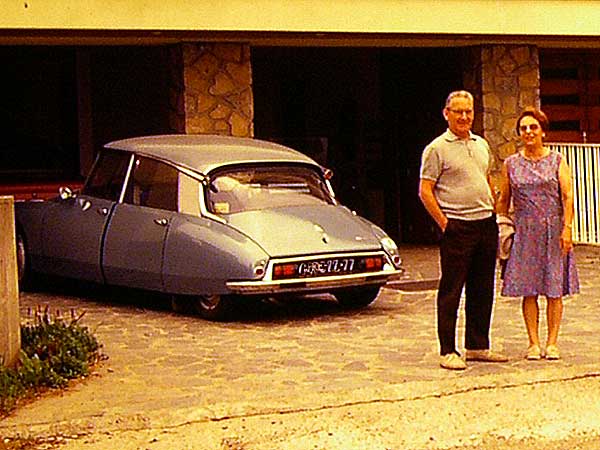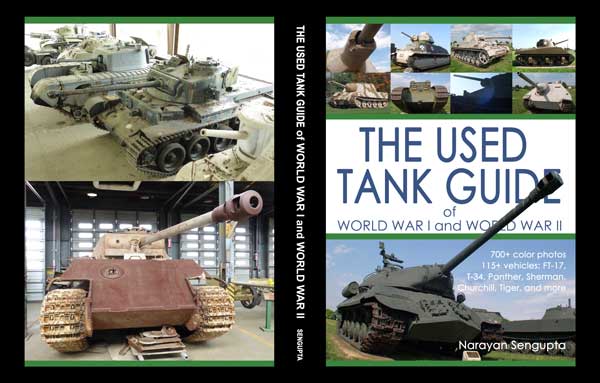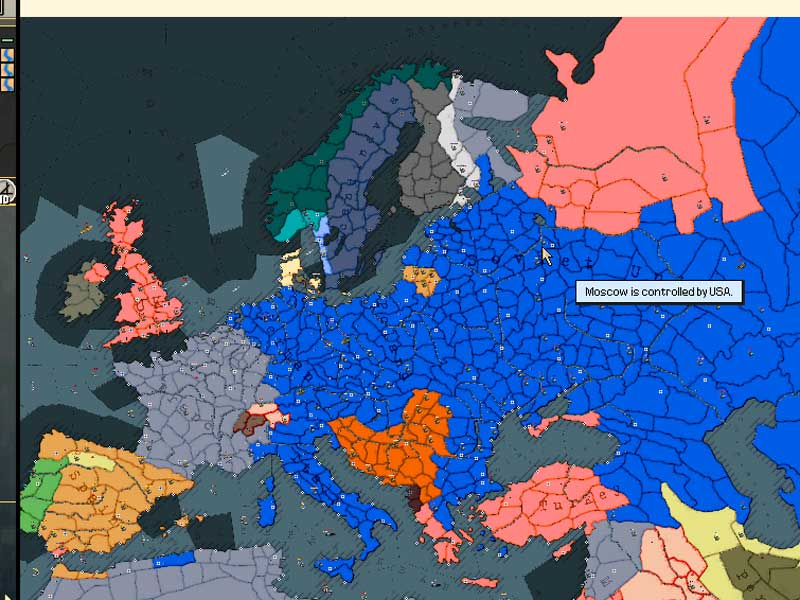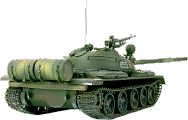Liberation of Coulommiers, France, August 27, 1944
American bombers hit all over France prior to D-Day in an effort to disrupt and paralyze German lines of communication and railway rolling stock. It was necessary, but in some cases, the damage was rather extensive. Thousands of French civilians were killed in the process. Le Havre, Amiens, Caen, Rouen, Chartres, Dunkirk, Lillle were all hit. Paris, 35 miles away from Saints, was too. But closer to home was Coulommiers. The air base there was a constant target. American archives indicate that Coulommiers was hit frequently. It was straffed by the 343rd Fighter Squadron on April 10, 1944, losing one fighter pilot who got hit by anti-aircraft fire. The pilot, Anthony Piscitelli, was killed, his aircraft crashing on the south-east end of the airfield. On June 14, 24 B-17s hit Coulommiers. On June 23, 23 B-25 bombers bombed it again. On June 27, 32 P-51 Mustangs came through on a straffing mission nailing one Luftwaffe airplane in exchange for no losses. [There was an ugly large silo building - the tallest one in town - which remained a poignant reminder of the war. It retained its yellow green camouflage from the war until it was finally demolished by the city in 2008.]
My mother, Claudine Thibault, wrote about her experience: "We had dug an underground shelter, a great tunnel all dark, on our property behind the courtyard where we had sheep, a rooster and chickens, and some geese too. It was in this shelter that we normally stored the wood, in a big oval metal grill, which which my grandfather, mother or my brother would fetch for heating. It was near the gate at the end of the yard where my grandparents cultivated vegetables which nourished our entire family. The shelter was also next to one of the huge trees which possibly was to give us a greater sense of protection. The tunnel was dark, very dark. The neighbors would come join us and we would close the entrance once again. One of my family members would take me in their arms and we would try to sleep. Heavy sounds, as loud as thunder would make me cry for a very long time. It's without a doubt due to this that I would find myself paralyzed by the sound of thunder until the end of my adolescence. The next day we would open the shelter, still in the arms of someone and we would go outside to see what had happened. All would have become silent once again. After this tormenting black night, the night of crying and discussions between the adults, the day was wonderful. It was later that I understood that these were the last of the Allied aerial bombardments."
The Germans had based Gruppe II/Nachtjagdgeschwader 4 (abbreviated toII/NJG 4) equipped with Do 217N-2 and mottled gray Bf 110G-4 night fighters at the airfield of Coulommiers. The airfield remains and is used to this day, though now it's just for light passenger aircraft. Traces of the old runway are still visible though the new runway is much more obvious, bigger and wider. The airfield is about 10 kilometers away from Saints. According to the book "Hitler's Luftwaffe", on June 3, 1944, just three days before D-Day, there were a total of 19 aircraft of which 10 were serviceable. The Do 217N-2s were equipped with radar, were capable of about 311 mph and had a service ceiling of 27,560 feet. The Messerschmitt Bf 110G was actually the most produced type of 110s. It was equipped with large nose radar antenae and an impressive array of machine cannon and machine guns. So no doubt there must have been some air to air combat as well. And as a permanent testament to the sacrifices of the Allied aviators, French historian Yves Richard points out that six British airmen are in one of the cemeteries of Coulommiers.
The Americans, British, Canadians had landed on the beautiful beaches of Normandy on June 6, 1944. The Germans disagreed about whether to meet the Allies on the beaches or hold back their strongest units in reserve to be able to move them forward to any possible invasion point. Between this disagreement and a convoluted command structure, the Germans were somewhat disorganized in their resistance to the Allies. Nonetheless, they still managed to bottle up the Allies in Normandy into early August. While the British and Canadians pushed hard against the German armor around Caen, the American VIII corps finally punched out heading south to Avranches, getting there July 31, 1944.
From there, the Americans started the beginning of a giant counter-clockwise wheeling movement toward Rennes, Le Mans and Orleans. This motion continued to Melun on August 21 where the US army spearheaded by the 3rd Armored Division bridged the Seine river southeast of Paris.
Crossing the Seine, Melun, France, August 25, 1944
"The Seine crossing began on the night of August 25 when division units poured across a bridge built by XX Corps engineers at Tilly, south of Corbeil. The division's own 23rd Armored Engineer Battalion built a 540 foot span during the night and, at dawn on August 26, it was put into use. This was the first serious combat bridge building attempt of the engineers under Lt. Colonel Lawrence G. Foster. A complete success, it was the first of many to be constructed during the long months of battle ahead.
Resistance was encountered almost immediately after combat commands had branched out into multiple spearheads. Reconnaissance Company of the 33rd Armored Regiment, which had led units of CC "B" across the Seine, were ambushed at first light on August 26. The company had reached a forward position at 0230 and, after posting guards, coiled into a tight leaguer among the trees of a little grove. At dawn the men of the command awoke to an inferno of horror; they had been discovered by an enemy tank force and were under heavy direct fire. Shivered trees crashed about the parked reconnaissance vehicles, and AP shells cracked through the wood. Several men were hit before they had fully awakened. One was cut completely in halves by a screaming projectile. A second gazed numbly at his hand which had been shot off at the wrist. One recon vehicle after another was hit and set ablaze.
Driving at such speed soon brought the 3rd into the heart of the enemy's communications zone. Near Soissons and Braisne, elements of the division destroyed three railway trains which were evacuating personnel and equipment to move east. The passage through the towns and villages so quickly evacuated by the Wehrmacht was slowed markedly by milling crowds who swarmed on and about the vehicles in delirious exhibitions of happiness." - cited from the 3rd Armored Division History Foundation
LeClerc's Free French 2nd Armored Division and French partisans liberated Paris on August 23-25. Mauperthuis - and thus Saints where my family was living and is from - were liberated on August 27, 1944 by the American 3rd Armored Division led by General Maurice Rose. Rose was the grandson of two Rabbis and the highest ranking Jewish officer in the army and had served in France in the 89th US Infantry Division during World War I. The handsome general, dark haired and more than six feet tall, was himself killed on March 31, 1945 by the Germans while he was attempting to surrender. (In retaliation, the Americans later killed 110 Germans who weren't involved in the killing of General Rose.) In between, under his leadership, the 3rd Armored Division took on the nickname "Spearhead" and once drove more than 100 miles in a single day - a record in modern warfare.
The 3rd Armored Division drove along D402 from the direction of Pezarches to Mauperthuis to Coulommiers to La Ferte sous Jourre. French historian Daniel Kramer recounts that the division took five hours to pass through the winding streets of Coulommiers, meeting light restistance. Photos of the liberators in Coulommiers show 75mm or 76mm gunned M4 Sherman tanks, an M3 Lee based T2 tank recovery vehicle, a 37mm M5 light tank along with an assortment of half tracks and a lot of jubilant French people. At one point a German vehicle surprised the Americans and opened up on them. Two Americans were killed in a shoot out before a French partisan lobbed a Molotov cocktail into the vehicle which left five Germans dead. In the mean time, seven German panzers were in the woods beyond Coulommiers and were shelling using indirect fire. French civilians indicated to the Americans where the German tanks were. The Americans surrounded and destroyed the German tanks. This is rather surprising given that the rule of thumb was that it took four American tanks to kill a German one. So I can only assume that the French led the Americans to where they could ambush the Germans from the rear where tank armor is typically lightest and also that these were not Panther or Tiger tanks, but perhaps lighter Panzer IVs, self propelled guns or even older French tanks pressed into German service. From Coulommiers, the American column northeast to La Ferte sous Jourre. Eventually they would have participated in the offensives in Alsace, the Battle of the Bulge and then onward into Germany until the war ended in 1945.
My mother wrote of the liberation on August 27: "All the villages were in a state of excitement. It seemed that we walked and biked for kilometers to get to Mauperthuis though the actual distance was only about a kilometer. I don't know how I, a little girl of three years, had arrived on the big road of Mauperthuis, at the junction of the road to Saints, next to the fountain where the horses used to stop, just two steps from the church which was still referred to as the protestant church. All along the side of the road, further than we could see, there was a crowd. We were on the side of D402 that comes up the hill from Touquin. People were hugging and calling out to each other excitedly. I was with my parents, grandparents, friends of my parents and others. On the shoulders of one or the other, on their arms and above the heads of people, we looked for the Americans. In this tumult and while waiting, the tanks appeared, enormous, noisy with giant wheels. On them, men, big, handsome, handing out candies, chewing gum and chocolate. They were liberating us, the French."
After Liberation of 1944 to the End of the War in 1945
After Liberation, the Allies used Coulommiers as a base for themselves for attacks further east into Germany. On September 11, 1944, the 425th Night Fighter Squadron equipped with P-61s moved there. Then 15 days later the A-20 equipped 646th Bombardment Squadron and 410th Bombardment Group moved there too. During the next two days more A-20s moved in.
At some point after Saints was liberated - I don't know if it was immediately after August 27, 1944 or after the end of the war on May 8, 1945 - there were anywhere from three to six German POWs at the house at any time. I don't know how long they stayed - a matter of months or years, but it was probably about two years in all. Grandpapa had to pay the civil authorities to use the prisoners. They toiled in the factory and in exchange were paid a small sum, nourished and housed. I believe that it was Grandmaman who would have cooked for everyone. By the time the war was over, with Germany having been put into shambles by the Allied strategic bombing offensive, there probably weren't many opportunities for work to go back to. In total about there were about 15 prisoners at one point or another. Only one "escaped" back to Germany. The rest stayed in place though they were never walled in or locked in. My Grandfather let them work at his factory, which must have been of benefit to him. They had their own quarters and facilities. One, a big blond about 30 named Bernard was very close to my mother. Bernard himself had a three year old daughter named Anita - my mother's age at the time. Mom apparently was very fond of Bernard and was jealous of Anita. Villagers wondered aloud to Grandpapa about him letting my Mom spend so much time with Bernard - a German. "He was a good man. I wasn't worried" he said laughing, reminiscing about the time he found the two of them asleep, my three or four year old Mom wrapped in Bernard's arms.
Another prisoner ended up marrying one of the local French girls.
I never ended up getting to interview my Grandfather further to find out more about why he was honored with the Croix de Guerre, nor did I get answers to so many other questions I had and have had since then. His little factory is still in Saints today - now run by my uncle. My Grandfather ended up becoming mayor of the town for 20 years.

Robert and Cecile Thibault circa 1970.
In spite of everything, he was forgiving of the German soldiers. "They were just men like us, doing what they had been told to do. Really they were no different from us." And after the war, he remained in touch with several of the Germans who had been prisoners under his care in Saints, some of whom came back to visit from time to time. And that was something that he and my Grandmother really enjoyed and appreciated. One of the last things related to this subject that happened before my Grandfather passed was the formation of a joint Franco-German military bridade, 5,000 men strong, based in Mullheim, Germany, at the extreme South-western tip of that country, right next to France and Switzerland, near Basel. He was both very excited about the brigade and optimistic that such steps taken would put a lid on the historic French-German enmity and be a foundation friendship that would last for the years to come.
2008 Postscript
There are certain details I hope to learn about more when I go to the French archives at Chateau de Vincennes outside of Paris next time I am in France. His division should have surrendered along with the rest of the Third Army in that pocket along with many of the other divisions located near the Maginot Line, but he also mentions Soissons which is nearer to our home, so there must have been an interesting story about how he got there. Also what did happen to the French troops once they surrendered when France did? It seems like they were just told to go home and not made to be POWs. To anyone else who might have ideas or research, I would be very appreciative if you contacted me at the address at the bottom of this page. Narayan Sengupta
Previous Page
Robert Thibault, French Soldier
Robert Thibault, French Soldier, page 1, 1907-1997
Robert Thibault, French Soldier, page 2, 1928
Robert Thibault, French Soldier, page 3, 1939-1940
Robert Thibault, French Soldier, page 4 - Liberation of Coulommiers, France, August 27, 1944
Francais
Italiano
Espanol
Deutsch
Related Links
- United States Air Service in World War I at www.usaww1.com
- My travelogues of France, USA, Canada, UK, Japan, Saudi Arabia, etc.
- Thibault Villa
- 3rd Armored Division History Foundation
Keywords
12ème RA 1940
12ème Regiment 1940
12ème régiment artillerie 1940
8e Division
8ème Division D'infanterie
12ème Régiment d'Artillerie (3ème Armée, 8ème Division D'infanterie)
8ème Division D'infanterie infanterie
Phoney War
French army, 1939-1940
EORs, Eleve Officiers de Reserve
Quentin Roosevelt
1st Pursuit Group
American Air Force in France
American Air Force World War I
3rd Armored Division
Robert Thibault
Alcee Thibault
Raymond Thibault
Louis Thibault
Louis Toussaint Thibault
Louis Guyot
Titi Regnier
Regnier, Meung sur Loire
Keywords
Liberation of Coulommiers, August 27, 1944
Liberation de Coulommiers, 27 aout, 1944
Liberation of France, 1944
3rd Armored Division

 Home
Home Hearts of Iron
Hearts of Iron








 French Military Victories...
French Military Victories...